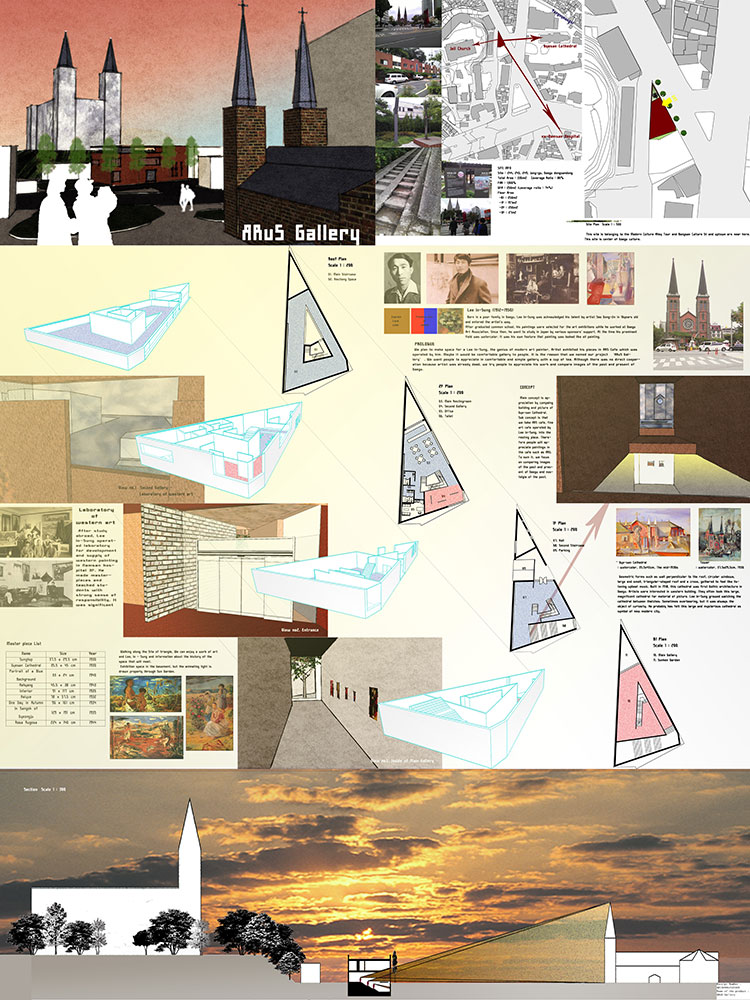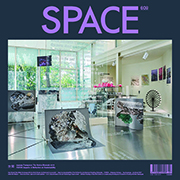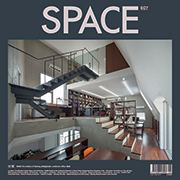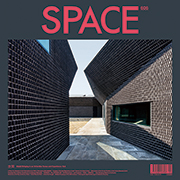The 31th Space Prize for International Students of Architecture Design
- Encounters and Dialogues between Architects and Artists -
SUBJECT
Encounters and Dialogues between Architects and Artists
How does it come about that an architect and an artist meet, and through their conversation, mutually inspire one other to such an extent that they begin to collaborate on building operations?
The results of the 31st Space Prize for International Students of
Architectural Design—conducted under the theme of ‘Encounters and Dialogues between Architects and Artists’—have been revealed. This open exhibition had over four hundred student applications from both Korean and foreign universities, with various universities from the United States, Mexico, Romania, China, Taiwan, as well as many others also submitting their works. The initial screening had more domestic students pass than the works of overseas students. The eight teams, a total of seventeen applicants that had passed the initial screening, were given the opportunity to hold presentations on the 13th of November at the Space Theatre. What stood out in this year’s presentations was the popular use of audiovisual elements in the expression of the design projects, such as videos.
The two judges Do ho Suh and Eulho Suh evaluated the presentations and deliberated for well over the allocated time, revealing quite how difficult it was to determine this year’s winners. It would seem obvious that Do ho Suh, as an installation artist, and Eulho Suh, as an architect, would have different standards of evaluation, but the results were intriguing. Both judges provided keen evaluations of all the presentations. They announced one team for the Grand Prize, one team for Prize of Excellence, two teams for Special Prize, four teams for Honorable Mention, and ten teams for Selected Works.
‘The presentations changed remarkably from their initial panel image’, said Do ho Suh. ‘The applicants were very well prepared, therefore I had much to consider’, he added. Do ho Suh stated that ‘When giving out the theme of the open exhibition, I thought about how I would have approached the situation’. They went on to encourage the students not to overly commit themselves to results, and described how the ‘way of learning’ has no right or wrong perspective.
The Grand Prize was given to Sohyun Jeon, Heejeong Ro and Jinho Shin’s ‘Black Hole: Walk to Remember’. Their presentation consisted of the work of an artist not well known to the public; Yimchoon Lee’s Black Hole, and a bamboo grove (the source of Yimchoon Lee’s inspiration) themed model, which is linear and elegant. The judges gave high commendation for the fact that the winning team reached Yimchoon Lee through SNS and met him, and earned the chance to deeply understand his artistic visions. The team also received high points for the way they reenacted tearing art—an artistic production method—in a pavilion modeling form. The exhibition ended on the 20th of November.
JURY REPORT
Do ho Suh_Artist,
Eulho Suh_Suh Architects
Do ho Suh (Artist)
I focused on cooperation, between the artist and the architect, from an artist’s perspective, and observed how well the architect had understood the artist’s work. I was astonished on how ‘Ambiguous Boundary’ understood and depicted the artist’s vision and also on how it was designed by rendering the organization of space through a parallel logic. The ‘INSIDE OUT’ presentation was amusing. The idea of flipping the silicon was interesting. Constructing a building without walls was inspiring. I believe the initial intention was eventually weakened by inserting the glass walls. ‘INFINITE PLATES’ fully understood BAE, Bien-U’s work. I liked the dramatic design of the gallery. It’s a great place for the work of any artist to be presented. ‘Black Hole: Walk to Remember’ is amazing. I wanted to know more about the artist’s perspectives and visions on his work after the presentation. I liked the way they designed the work by simply showing the process of tearing art. It was designed for people to experience the work and the time changes by walking through the space.
Eulho Suh (Suh Architects)
I focused on architectural completion. During the overall judging process, I had some disagreements with Do ho Suh, and as a result, many different ideas came up. I believe the applicants had learned a lot through expressing their ideas and producing the output on a single panel image, and all in a mere five minutes. Gonzalez Torres’ gallery on first sight could be seen as an architectural model or as a construction, but the project itself was innovative for its variability. It was impressive how another team, inspired by Beth Galton’s work, displayed their ideas and logic. However, it would have been better if that concept was fully depicted on the output. I could sense BAE, Bien-U’s experimentalism was producing an actual space with the words, not just in listing them. The interior was emotional and touching but it could have been improved if they had avoided direct entry from the outside. Lastly, Yimchoon Lee’s gallery is astonishing. I have not heard of the artist. The presentation and the board’s image were very different. I experienced the seriality of sequence in the straight lines. It had a sense of scientific logic. The process of his work was interesting. If the gallery would actually be constructed, I would like to pay a visit.
Subject Description
Encounters and Dialogues between
Architects and Artists
Many art museums and galleries own a series of the famous water lily paintings by Claude Monet. Of them, the Musée de l’Orangerie in Paris, France and the Chichu Art Museum in Naosima, Japan, are the only galleries to exhibit these works in a dedicated room. The white water lilies room in the Musée de l’Orangerie, which opened in 1927, was designed to a deliberate oval shape, through direct cooperation with Monet himself. The Chichu Art Museum takes a different tack, housing the Waterlilies collection of Soichiro Fukutake, chairman of Benesse group, and is designed by Tadao Ando, who studied Monet’s paintings and attempted to represent their essence through his architectural design. When architecture is carried out from this foundation of reciprocal understanding, it can provoke a chemical combination between space and the artwork exhibited.
A chance leads to an encounter, an encounter to interest, interest to dialogue, and dialogue to another opportunity. Dialogue provides the key when shaping the next stage in one’s mental encounter with a gallery. As such, under the direction of ‘encounters’ and ‘dialogues’, we are going to think about a process toward one common goal and mental preoccupation.
Artists lead the world of fantasy and architects remind us of ideal world. Their encounters intersect with fantasy and ideas open a new world to us. Artwork in real space, sheltering from rain and cold, makes imaginary or depicted rain all the more elusive and leaves an aftertaste hotter than the sun. This real encounters means more than three-dimensions are present in any one space.
The embodied encounter of two parties can produce architecture that embraces artwork. Let’s design a space for artists, particular works, collections, or collectors that you usually have been interested in, regardless of the fields, such as an artist, philosopher, novelist, and musician. This requires a deep understanding and conversation with them or their works. Its result can be a memorial hall, museum or the spatial conditions for the artist. We expect the idea would be expressed not only by architectural space but also by various other figurative types such as landscape (garden, park, plaza etc) and visual arts (furniture, product design).
Creating a real work as the result of research on human, philosophy, literary, fine arts, music. We expect to meet new world of works created by immeasurably intersecting encounters and the chance for deep dialogue in the Space Prize for International Students of Architectural Design.
GRAND PRIZE

Ro, Heejeong
Sangmyung University
Shin, Jinho
Hanyang University
Jeon, Sohyun
Ewha Womans University
Black Hole: Walk to Remember
 The dreamlike sound of bamboo leaves fluttering in the wind, and the beautiful video from which this image resonates, portrays a three-dimensional scene of fluttering bamboo leaves on a flat canvas. ‘Black Hole: Walk to Remember’ is displayed in a bamboo grove, which is the source of inspiration for tearing art. Not only does the grove serve as a space for art appreciation, it expresses what the artist felt in the grove at the time of inspiration.
The dreamlike sound of bamboo leaves fluttering in the wind, and the beautiful video from which this image resonates, portrays a three-dimensional scene of fluttering bamboo leaves on a flat canvas. ‘Black Hole: Walk to Remember’ is displayed in a bamboo grove, which is the source of inspiration for tearing art. Not only does the grove serve as a space for art appreciation, it expresses what the artist felt in the grove at the time of inspiration.
Yimchoon Lee thought a society based on order of rank is a ‘universe’, and the weak individuals that make up that society as the multitudinous dusts in the universe. This vision is projected in his work, Black Hole.
The gallery located in the bamboo grove is created as a space that acquires the attention of its surroundings; the works are displayed on a compound surface, which allows for the works to fulfill the spectators’ view. Inside the gallery, the appreciators become the subject of the artist’s values; ‘the individual inside a giant society of organization’, hence relating themselves to the work.
The bottom of the object, once led by a natural change, becomes another type of space?beyond the initial dimension?constructing a new topographical disparity of space. Not seeking to encourage certain behaviours from the audience, it rather provides a variety of experiences for them; walking through the bamboo grove with spatial alterations in the continuous changes in direction of the free path, looking at the artist’s work, and sitting on the bench which naturally emerges from the wall. It creates a psychological rapport with the artist by allowing them to experience various spatial shifts and to share their senses beyond time and space, which is also a sequential factor in leading the path organically through this new dimension.
PRIZE OF EXCELLENCE
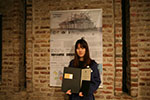
Kim, Hyangshin
Kookmin University
Ambiguous Boundary
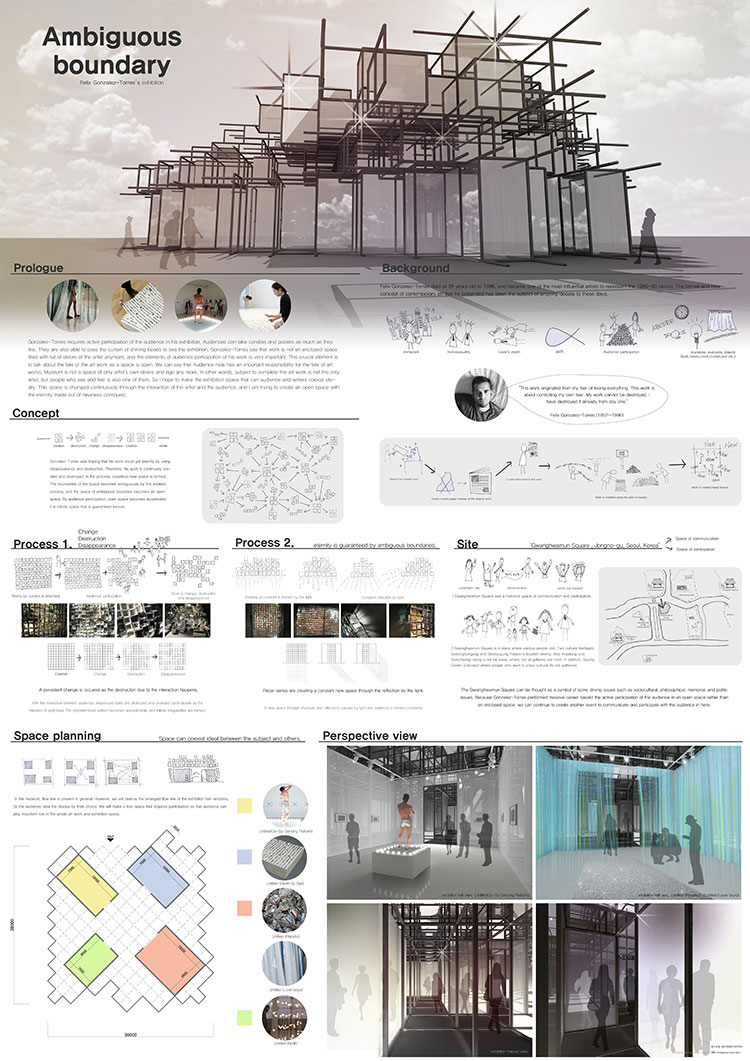 Felix Gonzalez-Torres was a third-world Cuban immigrant, and having moved to New York, was also in a sexual minority. Gonzalez-Torres lived a tragic life, witnessing the death of Ross Laycock, his former lover from AIDS, and he himself was infected with the disease, leading him to live a life limited in its scope. To a person like Gonzalez-Torres, the concept of demise is an inevitable fate. Instead of destroying his work from fear of the end, Gonzalez-Torres made a powerful artistic statement. Destroying the concept of the physical ‘original’ work, he created a room in which curators and the audience may both intervene and reconstruct the original work. His artistic method is about maintaining minimalism?keeping modeling elements to a minimum?
Felix Gonzalez-Torres was a third-world Cuban immigrant, and having moved to New York, was also in a sexual minority. Gonzalez-Torres lived a tragic life, witnessing the death of Ross Laycock, his former lover from AIDS, and he himself was infected with the disease, leading him to live a life limited in its scope. To a person like Gonzalez-Torres, the concept of demise is an inevitable fate. Instead of destroying his work from fear of the end, Gonzalez-Torres made a powerful artistic statement. Destroying the concept of the physical ‘original’ work, he created a room in which curators and the audience may both intervene and reconstruct the original work. His artistic method is about maintaining minimalism?keeping modeling elements to a minimum?
and the audience participating in the supply of ingredients, and the expanding of the work by audiences symbolizes his longing for eternity. An artist who makes the audience participate in one’s work no longer views an audience as an audience, but views them rather as collaborators. Galleries are no longer a place in which only those dubbed artists may express their egos and desires, and artists are no longer the principle factor in the completion of a work of art. Therefore, Gonzalez-Torres sought out to create an open environment for the artist and the audience to ideally co-exist, and through their interaction of continuous transformation and changes of meaning to attain true eternity. Gonzalez-Torres’s artistic process strives for eternity through destruction and demise. During this process of endless creation and destruction, creating countless dimensions, the boundaries between dimensions are blurred. A dimension with blurred boundaries is shown as an open dimension, and with the participation of the audience the process is accelerated towards an eternal dimension, which has been granted through eternity.
SPECIAL PRIZE
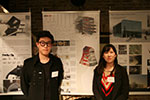
Kwon, Hyunchul + Song, Jooyeon
Chung-Ang University
INSIDE OUT
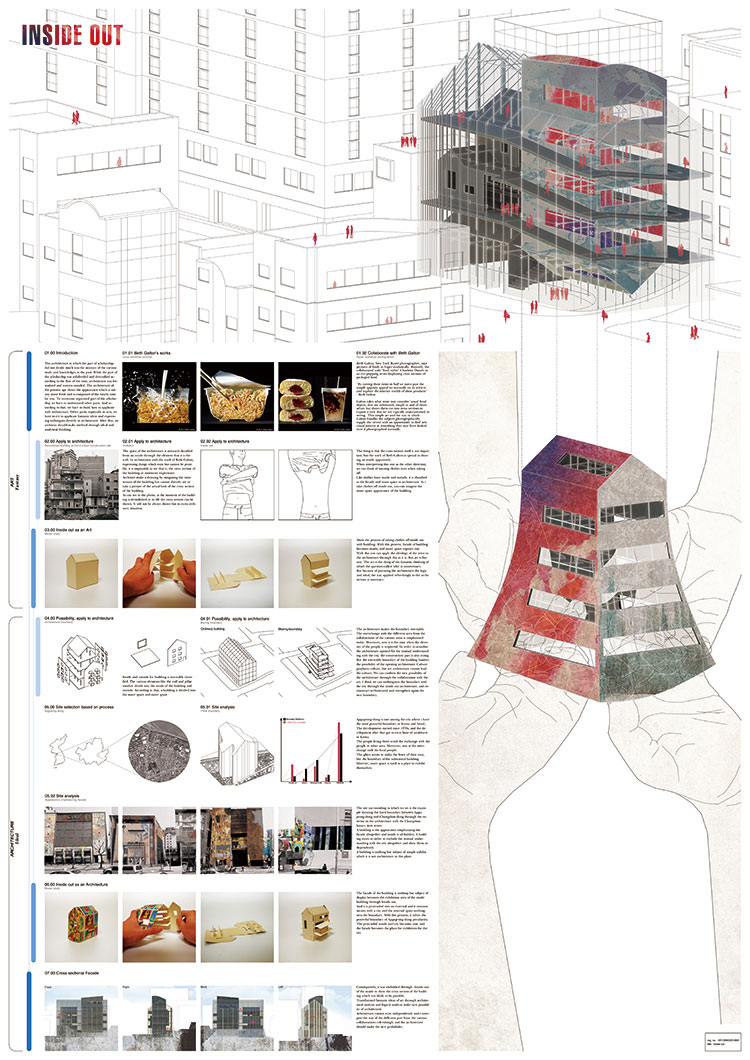 Beth Galton, the New York Based photographer, takes pictures of cross-sections of packaged food. Galton exposes them when they are cut into cross-sections to expose a view that we are unaccustomed to seeing. The space of the architecture is outwardly classified from an inside through the element that is the wall. In the architecture of the work of Beth Galton, expressing things which exist but cannot be possible, it is impossible to see what the cross-section of the building is or moreover to experience it as fully. The thing is that the cross section itself is not important, but the work of Beth Galton is special in revealing the inner construct. When interpreting this as the other direction, we can think of turning clothes over when taking them off. How might one reveal the process of taking clothes off inside out with architecture. With this process, the facade of building becomes the inside, and the inner space exposes the outer layer. The art is an object of the fantastic thinking of the artist themselves, but because of pursuing the architectural logic and ideal, the method here applied is necessarily refreshing to the architecture. Apgujeong-dong is one site among the city that has the most powerful boundary in Korea and Seoul. The people living there avoid exchange with the people of other areas. This place seems to make a fence of its own, like the boundary of a substantial building. Moreover, outer space is used as a place to exhibit them. On the inside, the facade of the building that simplistically functioned as an object became an exhibition space for the building’s interior. Exposing the inside space to the outside functions as a communicative device to communicate with the city and set free boundaries. Thus the particularly stubborn border of Apgujeong-dong is freed. The inside-out exposed interior becomes one with the city, and the facade becomes an exhibition space for the city.
Beth Galton, the New York Based photographer, takes pictures of cross-sections of packaged food. Galton exposes them when they are cut into cross-sections to expose a view that we are unaccustomed to seeing. The space of the architecture is outwardly classified from an inside through the element that is the wall. In the architecture of the work of Beth Galton, expressing things which exist but cannot be possible, it is impossible to see what the cross-section of the building is or moreover to experience it as fully. The thing is that the cross section itself is not important, but the work of Beth Galton is special in revealing the inner construct. When interpreting this as the other direction, we can think of turning clothes over when taking them off. How might one reveal the process of taking clothes off inside out with architecture. With this process, the facade of building becomes the inside, and the inner space exposes the outer layer. The art is an object of the fantastic thinking of the artist themselves, but because of pursuing the architectural logic and ideal, the method here applied is necessarily refreshing to the architecture. Apgujeong-dong is one site among the city that has the most powerful boundary in Korea and Seoul. The people living there avoid exchange with the people of other areas. This place seems to make a fence of its own, like the boundary of a substantial building. Moreover, outer space is used as a place to exhibit them. On the inside, the facade of the building that simplistically functioned as an object became an exhibition space for the building’s interior. Exposing the inside space to the outside functions as a communicative device to communicate with the city and set free boundaries. Thus the particularly stubborn border of Apgujeong-dong is freed. The inside-out exposed interior becomes one with the city, and the facade becomes an exhibition space for the city.
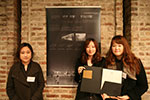
Kim, Yeaeun+Kim, Jihyun+Seong, Kihyeon
Yonsei University
INFINITE PLATES
.jpg) BAE, Bien-U is an artist that captures Korea’s sentiments in his photographs. His renowned work, Pine Tree depicts winding pine trees in the mist like an ink-and-wash drawing. Regardless of east or west, the pine tree approaches anyone in an intuitive way. The interior of his work is a space full of bright lights and it seems as if the lush forest of pine trees extends out limitlessly. By showing a part of the picture frame, we thought it rather opened up a limitless space with no end in sight. The limitless space is depicted with the mist, lights, and rich pine trees in a black-and-white photograph, leaving a strong impression on the audience. We would like to create an original space to understand BAE, Bien-U’s work, through a virtual conversation based on his work and interview.
BAE, Bien-U is an artist that captures Korea’s sentiments in his photographs. His renowned work, Pine Tree depicts winding pine trees in the mist like an ink-and-wash drawing. Regardless of east or west, the pine tree approaches anyone in an intuitive way. The interior of his work is a space full of bright lights and it seems as if the lush forest of pine trees extends out limitlessly. By showing a part of the picture frame, we thought it rather opened up a limitless space with no end in sight. The limitless space is depicted with the mist, lights, and rich pine trees in a black-and-white photograph, leaving a strong impression on the audience. We would like to create an original space to understand BAE, Bien-U’s work, through a virtual conversation based on his work and interview.
‘INFINITE PLATES’ is a space that maximizes the characteristics of the piece Pine Tree for the appreciator. We view the space as the extension of the pine grove shown in the piece. The piece gives depth to the ceiling curve, and the curve of the wall that naturally leads to the piece integrates with the infinite space portrayed in Pine Tree. During this process, the piece transforms from a flat surface into a three-dimensional environment. Displaying Pine Tree on a wall behind a layer of light maximizes the infinite space inside the piece. As such, after understanding and conversing with the artist BAE, Bien-U, the piece and the space attain another form of completion through the meaning of the piece.
HONORABLE MENTION
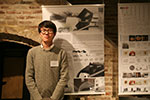
Wang Wei
Pusan National University
Sequence of Emotion
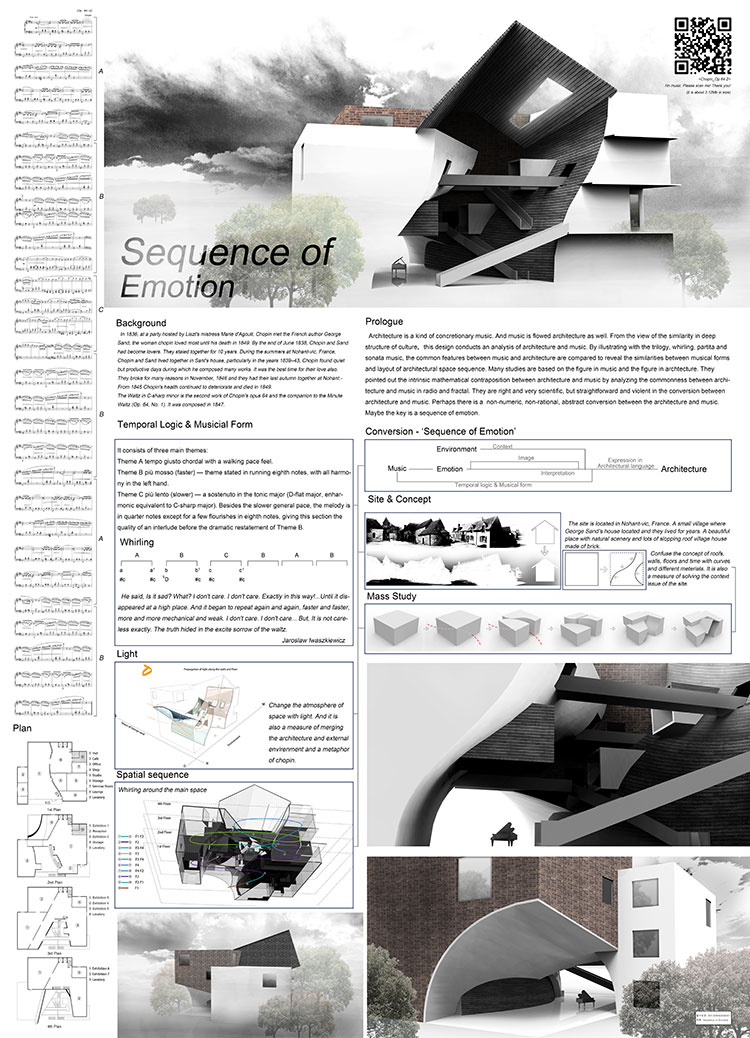
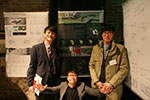
Kim, Jeeyong+You, Changsuk+Jeong, Daun
Kyungpook National University
VIEKIM
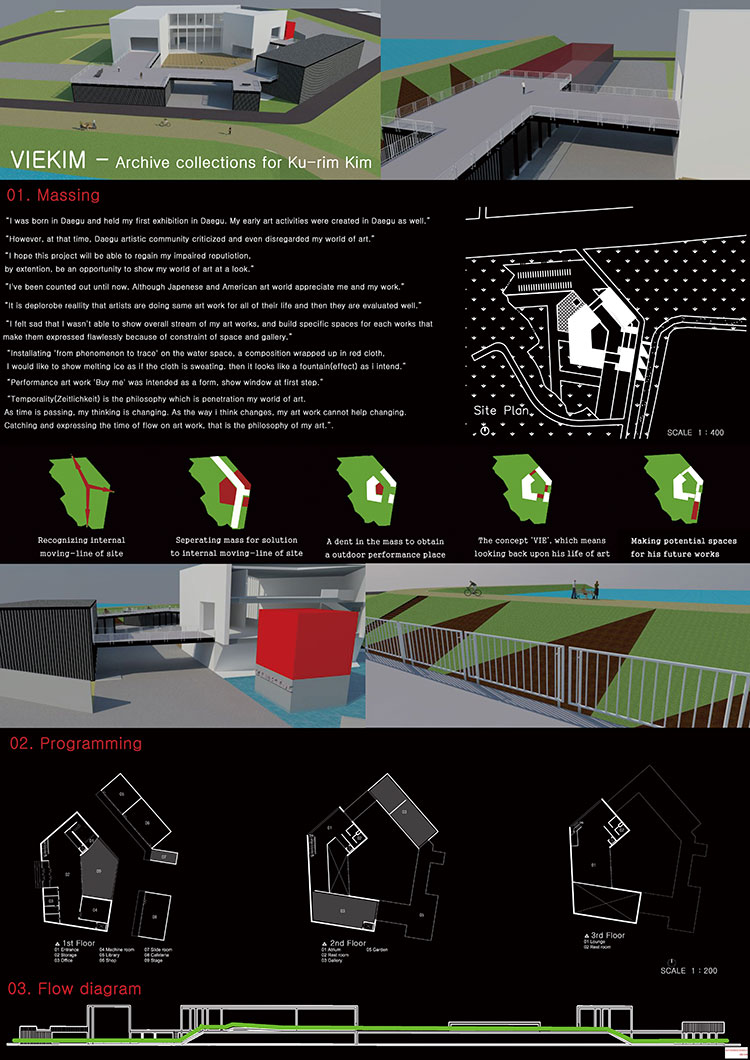
.jpg)
Lee, Gahee+Ha, Nayeon
Kookmin University
ETERNAL CANVAS
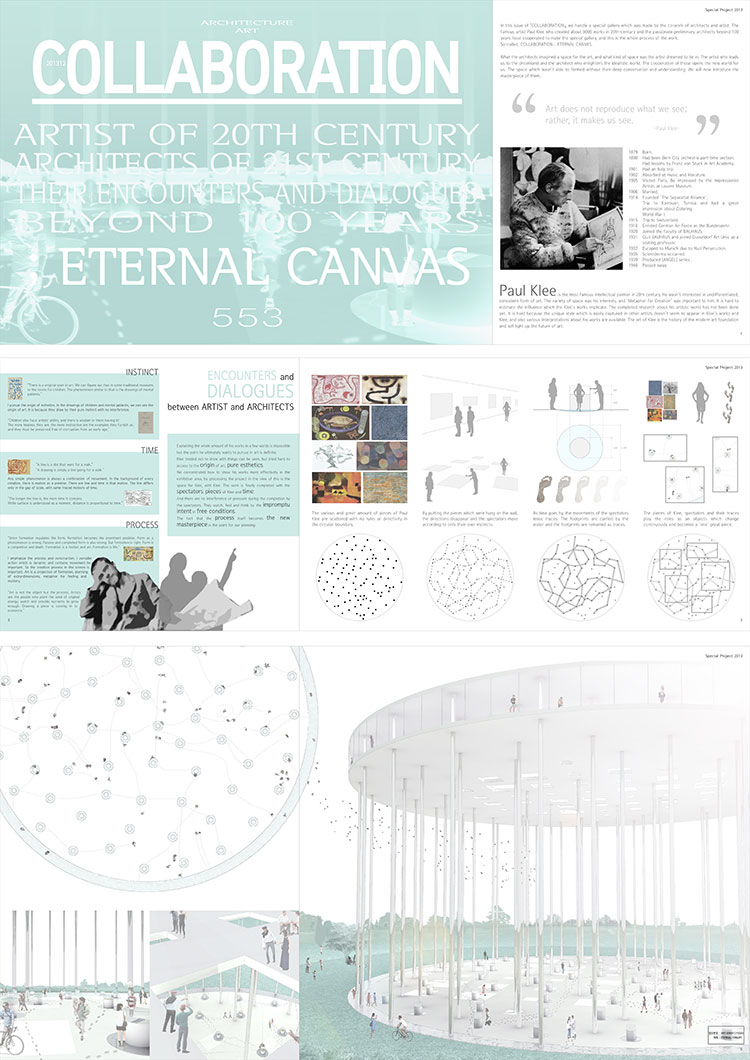
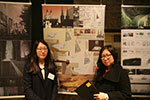
Son, Dasol+Jeong, Boun
Kyungpook National University
ARuS Gallery
